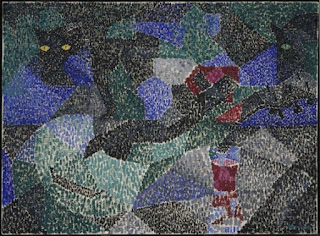Photo by David Katzman
I.
On this night in 1882, a star was born: the Hungarian-American actor Bela Lugosi, best remembered as Dracula in the 1931 horror classic of that title (dir. Tod Browning); the story of the strangest passion the world has ever known.
It was a role that he had previously played on stage in a 1927 Broadway adaptation of Bram Stoker's novel and one that both defined him as an actor and limited his future opportunities; eventually giving us a comic turn as the Count in Abbott and Costello Meet Frankenstein (dir. Charles Barton, 1948).
This pretty much signalled the end of his career as a serious actor and, addicted to morphine combined with worsening alcoholism, things quickly went from bad to worse and he ended up taking roles in the films of Ed Wood, a filmmaker famously described by critics as the worst director of all time.
II.
On August 16, 1956, the news was announced that Bela Lugosi had died, peacefully in his sleep, aged 73.
Amusingly, he was typecast to the very end; buried wearing his Dracula costume, including the cape. This was not at his prior request, but done on the instructions of an ex-wife, Lillian, and their son, Bela Lugosi Jr., believing that the old man would've liked it (I'm not entirely sure about that).
Even more amusing is the story of how, when standing by Lugosi's open coffin, Peter Lorre turned to fellow actor Vincent Price and said: 'Do you think we should drive a stake through his heart, just in case?'
III.
To be perfectly honest, I can't say I'm a fan: Lugosi certainly had on screen presence as Dracula, but I always thought his performance lacked a little bite. In fact, he didn't even wear fangs for the film, this only becoming a cinematic convention in the 1950s; think Christopher Lee in the Hammer version of Dracula (dir. Terence Fisher, 1958).
And, as a child, I was always more enthralled by other Universal monsters; Boris Karloff's Frankenstein and Lon Chaney Jr.'s Wolf Man, for example. Lugosi's Dracula seemed a little too hammy for my tastes; not that his performance was unskilled, just that it was a little too theatrical and reliant on exaggerated gestures and a heavy foreign accent.
Still, it doesn't really matter what I think: Lugosi has his star on the Hollywood Walk of Fame; Andy Warhol made a 1963 silkscreen print titled 'The Kiss (Bela Lugosi)', inspired by a scene from Dracula; and Bauhaus have immortalised the actor in their classic single 'Bela Lugosi's Dead' (Small Wonder Records, 1979): click here.




